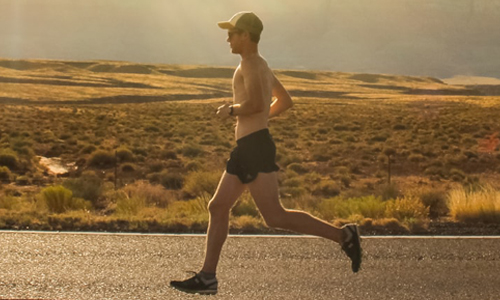HEAT TRAINING: Setting the Trends, Here and Now
Author

Chris shares his passion for cycling, hiking, skiing, and climbing from Buxton, in the Peak District. As a blogger for Outdoor Look, Chris shares outdoor tips and indoor tricks to help you get the most out of your time spent outside. When he's not out adventuring he's making videos or trying to keep up with his 4-year-old son.
It’s that time of the year again when the oppressive weather will ruin your workouts. Soon you have to take steps to prevent extreme heat exercise by switching workouts from mid-day to early morning or evening. But very few people realize that heat training is something that helps the body in many ways. It is something that helps us to meet the physiological needs of the workout and cause a series of modifications to improve our stamina.
The athletic performance depends on how easily oxygen can be transported from lungs to muscles through blood. Most athletes prefer altitude training because at high altitude, air is thin and the body reacts by producing more hemoglobin. But somehow, heat training is different from altitude training. Let's see what are the benefits and risk associated with heat training.

INCREASE IN PLASMA VOLUME
After a few days of heat training, you will see that the amount of plasma flowing through your veins is increased up to 20%. Since it is that part of the blood that doesn’t contain any hemoglobin-rich red blood cells, so it's not entirely apparent if more plasma can increase the stamina under mild weather conditions. Extra amount of plasma helps shunt more heat to your skin that enhances the efficiency in extreme heat.
IS EXTRA PLASMA USEFUL?
From the past few years, it is believed that extra amount of plasma impacts on the reduction of the red blood cell concentration in your blood, called hematocrit. This means that your heat training will increase your plasma but will decrease your hematocrit. Kidneys monitor the hematocrit that makes sure that it stays in a normal range. If there is a prolonged drop in your hematocrit, the kidneys respond by producing EPO to cause the formation of more red blood cells rich in hemoglobin.
SANTIAGO LORENZO EXPERIMENT
To understand the effectiveness of heat training, a researcher Santiago Lorenzo recruited 20 cyclists. First, they completed a performance test in moderate condition on two different occasions. All 20 cyclists completed a specified training schedule between the tests, but 12 of them did it in a hot environment while the other eight did their workouts in moderate conditions that matched the performance tests. The cyclists who underwent heat acclimation improved their performance by 6% in a cool performance test. Their VO2max and lactate threshold power production increased by 5%. No differences were seen among those who practiced in a cool climate.

WHY HEAT TRAINING IS GETTING ATTENTION?
It is observed that from the past few years heat training is getting more attention from people. The major reason behind it is that they are fairly comfortable and accessible. No one has the time to visit high altitude before any race or match to perform altitude training. But this is not the same case with heat training. You just have to step out of the door and even can go to a sauna or hot tub after a workout so you can prepare yourself for the big day. Five long weeks of unbearable heat exposure are really hard to commit to. Some people believe that such training can have very little significance in an amateur sport. Nonetheless, their results would certainly draw interest for those looking for every possible benefit. Heat training is very important as it helps the runners to enhance their fitness and improve their running abilities.
Author

Chris shares his passion for cycling, hiking, skiing, and climbing from Buxton, in the Peak District. As a blogger for Outdoor Look, Chris shares outdoor tips and indoor tricks to help you get the most out of your time spent outside. When he's not out adventuring he's making videos or trying to keep up with his 4-year-old son.
- Speed Up Your Post-Hike Recovery with These 6 Essential Tips
- Cycling through Tranquil Roads and Coastal Views on the Isle of Wight
- The Essential Guide to Hiking Safety: 5 Tips Every Hiker Should Know
- Run Smart, Run Strong: Your Guide to Injury-Free Running
- Embrace Biking: Essential Tips for Beginners
Categories
- Sport (28)
- Product Reviews (3)
- Team Outdoor Look (7)
- Mike Wild (2)
- Mike Payton (2)
- Suse Hammond-Pears (3)
- Snowboarding (12)
- Latest Offers (105)
- Shop Talk (1)
- Competitions (7)
- Walking (413)
- Lifestyle Fashion (8)
- Travel (86)
- Kit Guides (176)
- Workwear Clothing (6)
- Safety Workwear (4)
- Health/Fitness (289)
- Skiing (91)
- Great Outdoors (1316)
- Cycling (92)
- January 2025
- December 2024
- November 2024
- October 2024
- September 2024
- August 2024
- July 2024
- June 2024
- May 2024
- April 2024
- March 2024
- February 2024
- January 2024
- December 2023
- November 2023
- October 2023
- September 2023
- August 2023
- July 2023
- June 2023
- May 2023
- April 2023
- March 2023
- February 2023
- January 2023
- December 2022
- November 2022
- October 2022
- September 2022
- August 2022
- July 2022
- June 2022
- May 2022
- April 2022
- March 2022
- February 2022
- January 2022
- December 2021
- November 2021
- October 2021
- September 2021
- August 2021
- July 2021
- June 2021
- May 2021
- April 2021
- March 2021
- February 2021
- January 2021
- December 2020
- November 2020
- October 2020
- September 2020
- August 2020
- July 2020
- June 2020
- May 2020
- April 2020
- March 2020
- February 2020
- January 2020
- December 2019
- November 2019
- October 2019
- September 2019
- August 2019
- July 2019
- June 2019
- May 2019
- April 2019
- March 2019
- February 2019
- January 2019
- December 2018
- November 2018
- October 2018
- September 2018
- August 2018
- July 2018
- June 2018
- May 2018
- April 2018
- March 2018
- February 2018
- January 2018
- December 2017
- November 2017
- October 2017
- September 2017
- August 2017
- July 2017
- June 2017
- May 2017
- April 2017
- March 2017
- February 2017
- January 2017
- December 2016
- November 2016
- October 2016
- September 2016
- August 2016
- July 2016
- June 2016
- May 2016
- April 2016
- March 2016
- February 2016
- January 2016
- December 2015
- November 2015
- October 2015
- September 2015
- August 2015
- July 2015
- June 2015
- May 2015
- April 2015
- March 2015
- February 2015
- January 2015
- December 2014
- November 2014
- October 2014
- September 2014
- August 2014
- July 2014
- June 2014
- May 2014
- April 2014
- March 2014
- February 2014
- January 2014
- December 2013
- November 2013
- October 2013
- September 2013
- August 2013
- July 2013
- June 2013
- May 2013
- April 2013
- March 2013
- February 2013
- January 2013
- December 2012
- November 2012
- October 2012
- September 2012
- August 2012
- July 2012
- June 2012
- May 2012
- April 2012
- March 2012
- February 2012
- January 2012
- December 2011
- November 2011
- October 2011
- September 2011
- August 2011
- May 2010
- April 2010
- March 2010
- February 2010
- January 2010
- November 2009
- October 2009
- September 2009
Submit a Comment